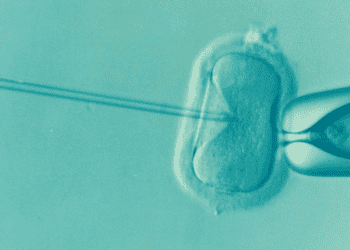Researchers in Japan claim to have found a way to produce eggs from male mouse cells, essentially creating mice with two biological fathers. The research was presented at the Third International Summit on Human Genome Editing in London and the study authors claim that the technology could be available in humans within 10 years.

Katsuhiko Hayashi, a pioneer in the field of lab-grown eggs and sperm, was looking for a treatment for Turner’s syndrome. Turner’s syndrome is weird: it only affects women, and it occurs when one of their X chromosomes (women have XX chromosomes, men have XY) is partially or completely missing. The condition affects around 1 in 2000 girls.
Women suffering from this are also often infertile and suffer a number of health risks. But Hayashi, presenting his yet-unpublished work, said while researching this, he found a way to produce eggs from male cells.
It’s not the first time researchers have created mice that technically had two biological fathers, but previous efforts involved genetic engineering and a lot of steps and challenges. This time, the eggs were cultivated from male cells, which marks a striking advance.
Hayashi says the work is still at a very early stage; the eggs are of low quality and it’s not possible to start work on humans yet, before the safety of the procedure is established. But the researcher told BBC News that he could see the current problems being overcome in as little as 10 years — at least technologically. This could mean a new fertility treatment would be developed, or potentially a way for same-sex parents to have a child.
However, while the approach would be welcomed in treating Turner’s syndrome, Hayashi also emphasized that there are social concerns about this method.
“I don’t know whether they’ll be available for reproduction,” he told The Guardian. “That is not a question just for the scientific programme, but also for [society].”
The method starts with skin cells that were reprogrammed into a stem cell-like state, becoming induced pluripotent stem cells — cells that enable the development of an unlimited source of any type of human cell needed for therapeutic purposes. Then, in these cells, the Y chromosome was deleted and replaced by an X chromosome “borrowed from another cell,” essentially resulting in two XX chromosomes. This was the most challenging part, says Hayashi.
Ultimately, the resulting cells were cultivated in a structure that replicated the conditions inside a mouse ovary. When the eggs were fertilized, the scientists obtained around 600 embryos that resulted in the birth of 7 mouse pups. This equates to an efficiency of around 1.2%, which is substantially lower than with normal female eggs, where the efficiency is 5% — but it’s still in the same general ballpark.
The baby mice then seemed to develop normally. They seemed healthy and went on to have offspring of their own. “They look OK, they look to be growing normally, they become fathers,” said Hayashi.
The method has not yet been peer-reviewed by experts, but Hayashi says he’s submitted the paper to a leading journal. Other researchers have also praised the work but emphasized that there’s a big difference between mouse eggs and human eggs.
Whether or not Hayashi’s optimism will turn out to be justified remains to be seen, but if it is true, there will likely be an immediate demand for this method. The market for pregnancy surrogates and IVF is booming, and many same-sex couples could be looking to have a biological child of their own.
Hayashi may be on to something regarding the ethics of the process and society’s willingness to accept something like this. For now, we’re treating it as something that may or may not happen — and in truth, it’s possible that the switch to humans turns out to be more complex than anticipated. But with the way technology is progressing, we may need to think about it soon enough.






